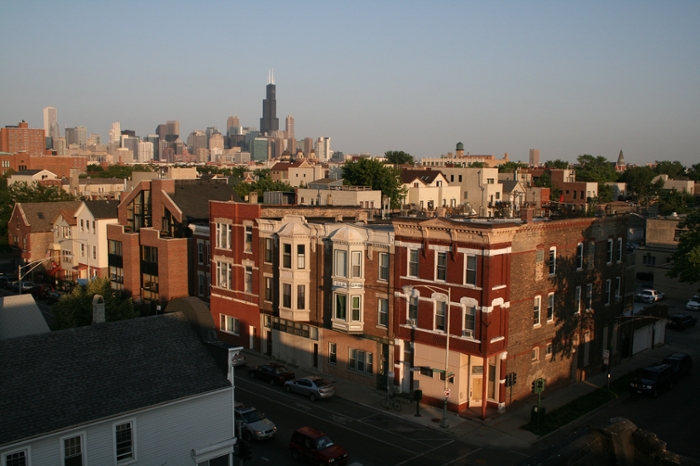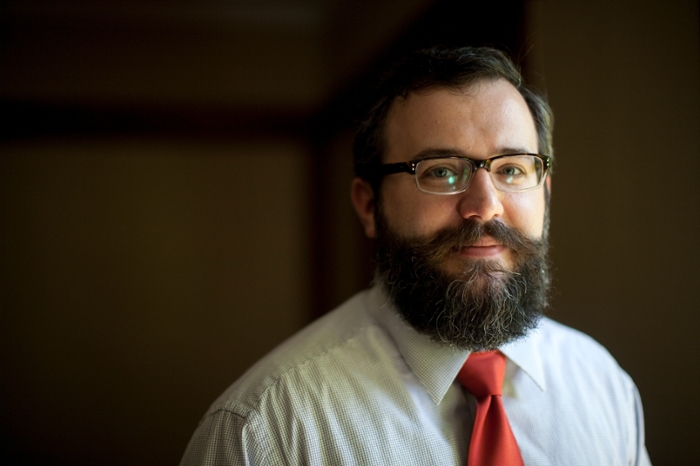Inequality in Homicide Rates in Chicago Neighborhoods Increased Over 20-Year Period
Study by IPR sociologist reveals inequality between safest and most dangerous neighborhoods increased by 10 percent
Get all our news

IPR sociologist Andrew Papachristos finds the inequality in crime in Chicago's neighborhoods increased by 10 percent in recent years.
The United States has experienced an unprecedented decline in violent crime over the last two decades (1990-2010); however, violent crime remains stubbornly concentrated in socially and economically disadvantaged communities. This certainly rings true in Chicago.
While nearly all neighborhoods in Chicago benefited from reductions in homicide, relative inequality in crime between the city’s safest and most dangerous neighborhoods actually increased by 10 percent over recent years, according to a new Northwestern University study.
“This increase was driven by a greater rate of decline in the city’s safest neighborhoods,” said Andrew Papachristos, IPR sociologist and lead author of the study.
“This crime gap can be partly attributed to the decreasing association between concentrated disadvantage and homicide in the safest neighborhoods,” he said. “We also find that the decline did not significantly alter the spatial distribution of crime, as homicides remained concentrated in the initially most dangerous neighborhoods and their adjacent areas.”

Papachristos said he was hoping the gap had actually narrowed.
“It did for a while,” said Papachristos, also a faculty fellow at the University’s Institute for Policy Research. “But the recent uptick and leveling off in crime really started to drive the gap up.”
The researchers’ goal was to look at how crime generates inequality.
“The ‘move’ was to go beyond does crime go ‘up or down,’ but rather how crime generates inequality,” Papachristos said.
They thought of the “crime gap” as something similar to the education or earnings gap.
“Does the ‘top 1 percent’ of neighborhoods shape violence in the city more than the other 99 percent? And if crime went down, shouldn’t the ‘worst’ neighborhoods change the most?” he added. “We found out that inequality is much more complicated. While the city as a whole got ‘safer,’ the inequality between neighborhoods—the crime gap—got worse, especially in the later time period.”
And while Chicago’s crime rate has declined like other cities during the “great American crime decline,” Papachristos said rates in Chicago have remained higher than New York, Los Angeles and other cities.
Earlier this year, Papachristos published “Closer to Guns: The Role of Street Gangs in Facilitating Access to Illegal Firearms,” but he had not examined crime and violence in Chicago in this way before.
“The unique part of this was really looking at things over an extended period of time and tracking inequality in this way,” Papachristos said. “We need to ‘mind the gap.’ While we, of course, need to pay attention to homicide rates going up or down, we need to understand how crime generates massive inequalities more broadly.”
[Read the related article: Launching the Northwestern Neighborhood and Network Initiative]
“Understanding the Crime Gap: Violence and Inequality in an American City,” was published last week in the American Sociological Association's City & Community. In addition to Papachristos, co-authors include Noli Brazil, University of California, Davis, and Tony Cheng, Yale University.
Invisible Network Drives Chicago's High Crime Rates
In addition, another recently published Chicago-focused study led by Papachristos found that the city’s high crime rate is driven more by an invisible network of personal criminal connections across Chicago than by organized crime or street gangs.
Papachristos and co-author Sara Bastomski of the Urban Institute found that people who commit, and are arrested for, crimes together—or co-offenders—form a pathway for the spread of crime across all of the city’s neighborhoods.
They examined how these co-arrest patterns for the same crime indicate that a strong network connects not just individuals but also their neighborhoods, no matter their predominant socioeconomic makeup.
For example, though violent crime is more than 20 times higher in Chicago’s West Garfield Park (a predominantly African-American neighborhood) than in Jefferson Park (a largely white neighborhood just a few miles to the north) both of these neighborhoods are actually connected in crime through people’s interactions.
According to the researchers, the study ultimately highlights the need for violence-prevention policies that provide city-level solutions, while also providing support to the most vulnerable and crime-ridden communities.
“Importantly, our findings suggest that crime does not diffuse across neighborhood boundaries like an airborne pathogen. Instead, crime moves across very particular network pathways that are created as individuals engaged in crime move throughout the city—a pattern that persists even though those individuals engaging in crime change over time,” the co-authors wrote.
“Connected in Crime: The Enduring Effect of Neighborhood Networks on the Spatial Patterning of Violence” was published in the American Journal of Sociology.
Andrew Papachristos is professor of sociology and an IPR fellow.
This article was written by Hilary Hurd Anyaso and the IPR communications team and was originally published on Northwestern Now.
Photo at top: Courtesy of Stephen M. Scott (Flickr).
Published: December 11, 2018.